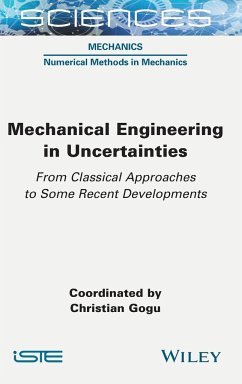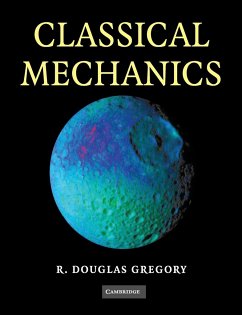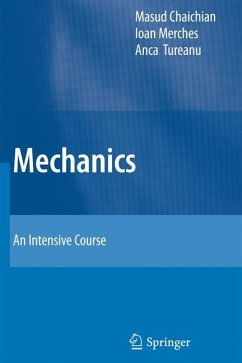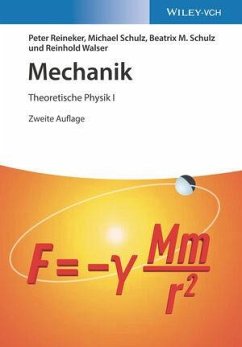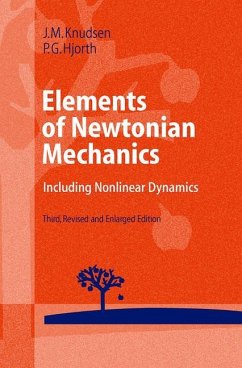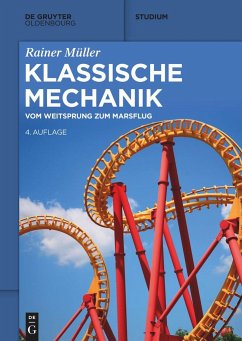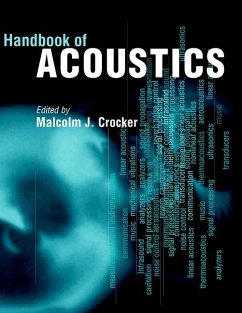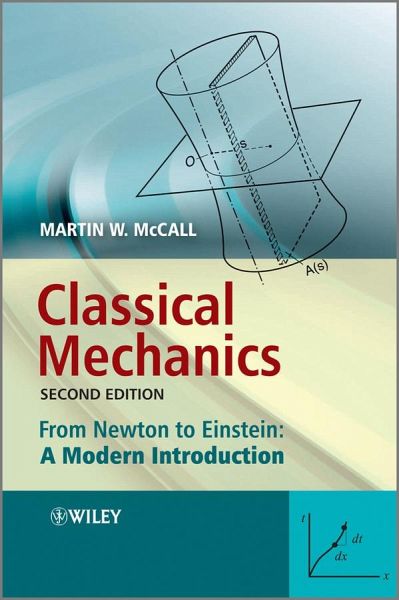
Classical Mechanics
From Newton to Einstein: A Modern Introduction
Versandkostenfrei!
Versandfertig in 2-4 Wochen
76,99 €
inkl. MwSt.
Weitere Ausgaben:

PAYBACK Punkte
38 °P sammeln!
Classical Mechanics is a comprehensive yet concise introduction to classical mechanics and relativity. Assuming only a minimum of mathematical knowledge, the book combines a user-friendly style with an authoritative approach to its subject, beginning with Newton's laws and advancing onto an exposition of Einstein's Special Relativity. In addition to its emphasis on real life examples, the book also contains end-of-chapter revision summaries, together with problems designed to be both illustrative and challenging. With a supplementary Web link and solutions manual, here is an ideal introduction for first- or second-year physicists and (mechanical) engineering undergraduate students.
This new edition of Classical Mechanics , aimed at undergraduate physics and engineering students, presents ina user-friendly style an authoritative approach to the complementary subjects of classical mechanics and relativity.
The text starts with a careful look at Newton s Laws, before applying them in one dimension to oscillations and collisions. More advanced applications - including gravitational orbits and rigid body dynamics - are discussed after the limitations of Newton s inertial frames have been highlighted through an exposition of Einstein s Special Relativity. Examples given throughout are often unusual for an elementary text, but are made accessible to the reader through discussion and diagrams.
Updates and additions for this new edition include:
New vector notation in Chapter 1
An enhanced discussion of equilibria in Chapter 2
A new section on a body falling a large distance towards a gravitational source in Chapter 2
New sections in Chapter 8 on general rotation about a fixed principal axes, simple examples of principal axes and principal moments of inertia and kinetic energy of a body rotating about a fixed axis
New sections in chapter 9: Foucault pendulum and free rotation of a rigid body; the latter including the famous tennis racquet theorem
Enhanced chapter summaries at the end of each chapter
Novel problems with numerical answers
A solutions manual is available at: www.wiley.com/go/mccall
The text starts with a careful look at Newton s Laws, before applying them in one dimension to oscillations and collisions. More advanced applications - including gravitational orbits and rigid body dynamics - are discussed after the limitations of Newton s inertial frames have been highlighted through an exposition of Einstein s Special Relativity. Examples given throughout are often unusual for an elementary text, but are made accessible to the reader through discussion and diagrams.
Updates and additions for this new edition include:
New vector notation in Chapter 1
An enhanced discussion of equilibria in Chapter 2
A new section on a body falling a large distance towards a gravitational source in Chapter 2
New sections in Chapter 8 on general rotation about a fixed principal axes, simple examples of principal axes and principal moments of inertia and kinetic energy of a body rotating about a fixed axis
New sections in chapter 9: Foucault pendulum and free rotation of a rigid body; the latter including the famous tennis racquet theorem
Enhanced chapter summaries at the end of each chapter
Novel problems with numerical answers
A solutions manual is available at: www.wiley.com/go/mccall



